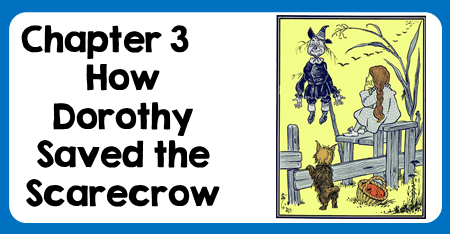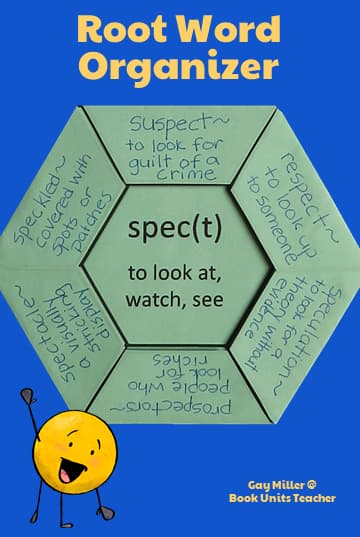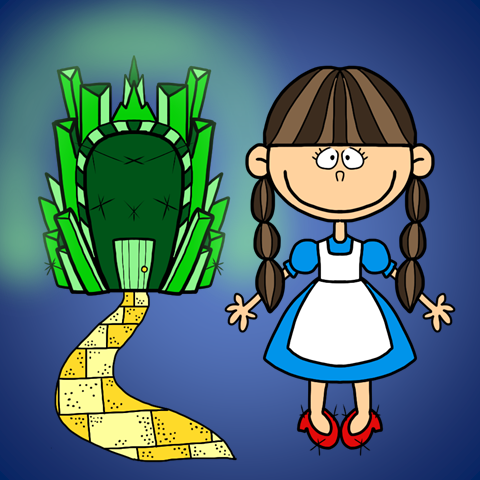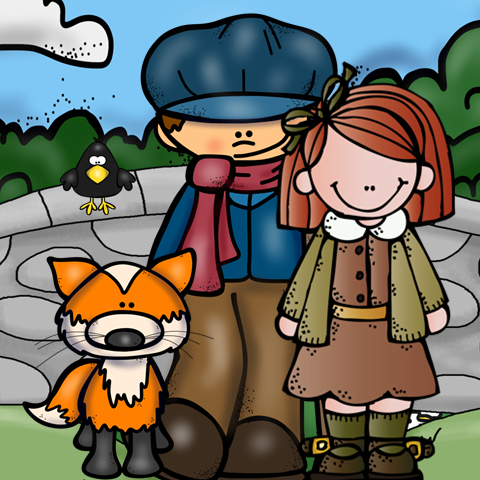
Welcome back to our Wonderful Wizard of Oz novel study! This post features teaching ideas and skill-building strategies for Chapter 3: “How Dorothy Saved the Scarecrow.” Whether you’re teaching the full novel or using this chapter to explore character development and point of view, you’ll find flexible resources to support your classroom goals.
New to the series? Visit the Introduction to the Book Study for setup tips and pacing suggestions.
Tips on pacing, setup, and how to use the materials across grade levels.
Includes word lists, bookmarks, word wall cards, and more – great for planning ahead.
Get vocabulary practice, comprehension questions, and organizers for this chapter.
🌽 Summary
Chapter 3: “How Dorothy Saved the Scarecrow”
After spending the night in a kind Munchkin’s home, Dorothy begins her journey to the Emerald City. As she travels down the yellow brick road, she encounters a Scarecrow stuck on a pole in a cornfield. The Scarecrow asks Dorothy to help him down, and the two quickly become friends. When he learns that Dorothy is going to see the Great Oz to ask for help returning to Kansas, the Scarecrow asks to join her hoping Oz might give him a brain.
This chapter introduces the first of Dorothy’s companions and begins to explore themes of intelligence, identity, and friendship.
Chapter 3: “How Dorothy Saved the Scarecrow” Projects
 Mentor Sentences
Mentor Sentences
One way to turn classic literature into a powerful teaching tool is to pull mentor sentences straight from the text. Instead of random worksheets, students get to see grammar, punctuation, and style in action—inside a story they’re already reading.
1. “Who are you?” asked the Scarecrow when he had stretched himself and yawned. “And where are you going?”
📌 Focus: Complex Sentences (Dependent Clause + Independent Clause)
- Notice how the when-clause introduces a second action.
- Practice: Students write their own “when” sentences showing two events.
2. The girl washed herself carefully, dressed herself in the clean gingham, and tied her pink sunbonnet on her head.
📌 Focus: Parallel Structure / Series with Commas
- Emphasize the rhythm of three actions.
- Practice: Have students create their own three-action sequence.
3. “No, indeed. I don’t know anything. You see, I am stuffed, so I have no brains at all,” he answered sadly.
📌 Focus: Dialogue Punctuation
- Point out quotation marks and placement of the comma before the tag.
- Have students write their own dialogue sentences with correct punctuation.
 Focus Skills
Focus Skills

Constructed Response Skill – Point of View
Students analyze how the story shifts when the Scarecrow is introduced and how his perspective adds depth to the narrative. A foldable organizer helps students compare Dorothy’s and the Scarecrow’s points of view, using textual evidence to support their analysis.
Standards: RL.5.6, RL.6.6, RL.7.6
Language Arts Skill – Latin Root spec
This chapter introduces the root spec, meaning “to look” or “observe.” Students explore how this root appears in words like inspect, spectator, and retrospective, using a foldable organizer to define, illustrate, and apply each term in context.
Standards: L.5.4.b, L.6.1.a, L.7.4.b
Click here to download the FREE Chapter 3 resource.
Get Four Free Novel Studies!





 Previous: Chapter 2 – The Council with the Munchkins
Previous: Chapter 2 – The Council with the Munchkins Next: Chapter 4 – The Road Through the Forest
Next: Chapter 4 – The Road Through the Forest
